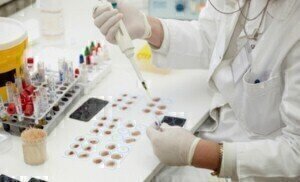Bioanalytical
Smallest ever liquid chromatography column developed by US researchers
Jul 30 2012
The smallest ever liquid chromatography column has been developed by US researchers, which could have applications in separating and analyzing individual molecules.
Made from a single carbon nanotube (CNT), Yury Gogotsi and his colleagues at Drexel University in Philadelphia have successfully developed the smallest ever liquid chromatography column. The researchers have published a paper in Scientific Reports, detailing how they developed the application and how it may be used in future tests.
Researchers confirmed their results by separating a mixture of two fluorescent dyes in CNTs with widths as small as 70nm. They achieved this by filling the CNT with the non-polar solvent diphenyl ether (DPE) and placing it at one end of the CNT, allowing it to be drawn by capillary action.
They then mixed red and green dyes with DPE and placed a droplet of this mixture at the other end of the CNT, causing the dyes to diffuse through the DPE-filled CNT.
DPE acted as the mobile phase and CNT the stationary phase. This led to the two dyes being partially separated as they diffused through the CNT, with the red dye showing stronger levels of interaction than its green counterpart.
In order to improve the separation, Mr Gogotsi and his colleagues showed they could either synthesize smaller multi-walled CNTs within the main CNT, providing more wall to interact with, or coat the inside of the CNT wall with iron oxide nanoparticles.
Mr Gogotsi said: "We believe that this research will lead to development of tools for analysis on single living cells and push the limits of analytical chemistry to even smaller scales and to single organelle columns."
In order for this to be achievable, the researchers will have to separate individual molecules in the CNT column and also detect them.
The initial proof-of-principle work used fluorescence detection, but Mr Gogotsi will look at coupling the CNT column with more sensitive and flexible detection techniques in the future, which could involve surface-enhanced Raman spectroscopy and electrochemical detection.
Posted by Fiona Griffiths
Digital Edition
Chromatography Today - Buyers' Guide 2022
October 2023
In This Edition Modern & Practical Applications - Accelerating ADC Development with Mass Spectrometry - Implementing High-Resolution Ion Mobility into Peptide Mapping Workflows Chromatogr...
View all digital editions
Events
May 05 2024 Seville, Spain
May 15 2024 Birmingham, UK
May 19 2024 Brno, Czech Republic
May 21 2024 Lagos, Nigeria
May 23 2024 Beijing, China














